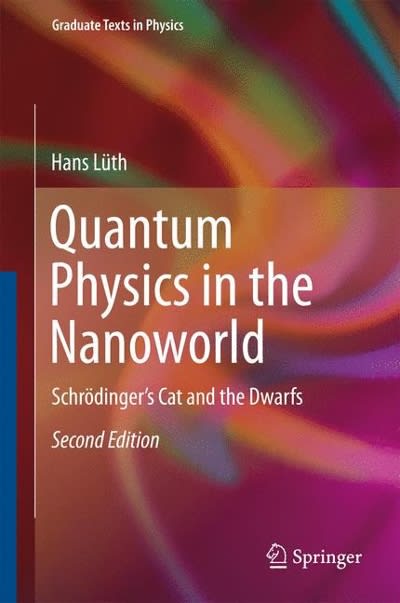Answered step by step
Verified Expert Solution
Question
1 Approved Answer
Answer all of the following questions. Answer each question as completely as possible, but do not merely copy answers from your reading materials. If you
Answerall of the following questions. Answer each question as completely as possible, but do not merely copy answers from your reading materials. If you cite a reference in the text, explain the meaning of the citation.
- The steps for thescientific method are listed in Chapter 1. List and explain each of the steps in the scientific method in the context of the following situation. You do not have to resolve the question; just explain the steps for resolving the question:
- It is well known that objects expand when heated. An iron plate will get slightly larger when put in a hot oven. Suppose an iron plate has a hole cut in the center. Will the hole get larger or smaller when the plate is heated and expansion occurs?
- Answer the following questions:
- Compare Aristotle's concept of inertia with the ideas of Galileo and Newton. In making your comparison, state the concept as each interpreted it and give the similarities and differences.
- If a baseball rolls across the ground and comes to a stop, how would Aristotle, Galileo, and Newton interpret the behavior of the ball?
- Answer the following questions:
- Explainmechanical equilibrium.
- If a book rests motionless on a table, what forces are acting on it?
- What is the net force on the book?
- How would the magnitude of the forces change if a second book of equal weight was placed on top of the first book?
- A 50 kilogram student stands in an elevator. How much force does she exert on the elevator floor if:
- The elevator is stationary?
- The elevator accelerates upward at 1 meter per second squared (m/s2)?
- Distinguish between speed, velocity, and acceleration. Explain the quantities in terms of "freely falling" objects.
- Answer the following questions:
- How long would it take for an object dropped from the Leaning Tower of Pisa (height 54.6 meters) to hit the ground?
- How fast was the object traveling at the moment of impact?
- Construct a table of values of velocity and total distance fallen at the end of each half-second during the first 5 seconds for a stone at rest dropped from a very tall building. Include columns for time, velocity, and total distance.
- A parachute dropped from a 30 meter-high cliff falls with a constant velocity of 1.5 meters per second. Twenty-two seconds later a stone is dropped from the cliff.
- How long does it take for the parachute to hit the ground?
- How long does it take for the stone to hit the ground?
- Which one will hit the ground first and why?
- Galileo used inclined planes to investigate "free fall." Why did he do that instead of experimenting with velocity by dropping objects?
- Explain the following terms:
- linear motion
- constant velocity
- accelerated motion
Step by Step Solution
There are 3 Steps involved in it
Step: 1

Get Instant Access to Expert-Tailored Solutions
See step-by-step solutions with expert insights and AI powered tools for academic success
Step: 2

Step: 3

Ace Your Homework with AI
Get the answers you need in no time with our AI-driven, step-by-step assistance
Get Started


